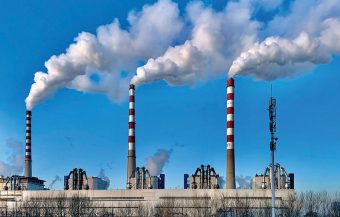The public debate on the Draft Energy Development Strategy of the Republic of Serbia until 2040, with projections until 2050, published by the Ministry of Mining and Energy, as well as the presentation of the Report on the Strategic Assessment of the Impact of the Energy Development Strategy on the Environment, was held at the Serbian Chamber of Commerce ( PKS). The public hearing will last until August 15, and the second public hearing will be held in the Niš Regional Chamber of Commerce on July 30 and the third in the Novi Sad Regional Chamber of Commerce on July 31.
The priorities of energy development are energy security, decarbonization and economic competitiveness of the energy sector, and the cessation of the use of coal in the production of electricity is expected by 2050, according to the Draft Energy Development Strategy.
By 2040, the capacity of thermal power plants will decrease by about 45 percent, and the capacity of wind farms and solar power plants will increase more than 20 times.
Mihailo Vesović, Director of the Sector for Strategic Analysis, Services and Internationalization in PKS, at the opening of the public hearing, said that there is great interest in the Draft Energy Development Strategy and that the new strategy is extremely important for the development of the economy.
“We have many restrictions during this period. The global escalation of geopolitical conflicts has completely changed the international circumstances in the energy sector, and the general uncertainty refers to the direction in which geopolitical events and energy prices on the market will move. This uncertainty makes this strategy very important, so that it can respond to the changes that will happen in the coming period. The strategy will make it possible to open a series of investments and new investments in the economy,” said Vesović.
Dušan Živković, general director of EPS and chairman of the Committee for Energy of the Polish Communist Party, stated that the energy crisis required a new energy strategy, but also the development of artificial intelligence, circular economy, and the process of decarbonization.
“All these processes imposed new rules of the game, and the crisis contributed to our understanding of how much energy sovereignty and energy security are a priority for every country and region. EPS will be the carrier of the energy transition. “The new energy strategy is something we need and will enable us to see how in the coming period energy companies and the economy can achieve the desired goals, primarily decarbonization,” said Živković.
In Serbia, there are slightly less than 800 megawatts of independent electricity producers.
Veljko Kovačević, State Secretary in the Ministry of Mining and Energy, said that among the basic development goals are that by 2030 the total installed power of solar and wind power plants on the grid will be around 3.5 GW, and in this way, almost every second megawatt-hour produced will be from green energy.
“By 2040, the capacity from RES should be increased almost three times. We can achieve these ambitious goals if the burden is shared by the public and private sectors. We successfully started that process with the first auctions for market premiums from RES,” said Kovačević.

The strategy envisages intensive investments in increasing energy efficiency in all sectors, as well as continued investments in the transmission network.
“In the next three to four years, all sections of the Trans-Balkan Corridor should be completed. The Pannonian Corridor project, which should double the capacity of the transmission network to Hungary, the Central Balkan Corridor, which will increase capacity to Bulgaria, and the Belgrade project, which will enable the evacuation of RES from Banat to the Belgrade region, are also planned. We will also continue investments in the distribution system, where large investments have been started in the reconstruction of the low-voltage network, replacement of meters, digitization and automation of the distribution system,” said Kovačević.
An increasing use of hydrogen is expected, and for its greater use, according to him, legal regulations should be established in the coming period, as well as the strengthening of technological and scientific research potential.
Dejan Ivezić, head of the Energy Center of the Faculty of Mining and Geology, said at the presentation of the Draft Strategy that the focus of the strategy is on two elements: energy security and energy transition. In order to further improve the environment for investments aimed at climate-neutral energy development, the draft strategy also proposes the gradual introduction of charging for greenhouse gas emissions, as a key economic mechanism for regulating the speed of the energy transition.
The introduced mechanism would discourage the use of fossil fuels and inefficient energy technologies and provide part of the incentives for improving energy efficiency, building capacities for the use of renewable energy sources, as well as for financial assistance to local communities in coal regions to ensure a fair (energy) transition.
After 2040, coal should not be used in households, public and commercial sectors, as well as in district heating systems.
Dejan Ivezić said that the abandonment of electricity production from fossil fuels is planned so that at no time will energy security come into question. Given that the process of energy transition implies certain uncertainty, the remaining coal reserves should acquire a strategic character.
It is necessary, as stated in the Draft Strategy, to provide funds for preventive excavation of overburden and discovery of coal, in order to enable rapid start-up of production in crisis situations.

The operation of thermal power plants will be adapted to current needs for electricity. This means that some blocks will work maximally in accordance with their performance, while a number of them will work with reduced power or, in a later period, will be in reserve status.
The document envisages considering the application of technologies for the collection and storage of carbon dioxide so that the operation of these power plants is in accordance with the needs of decarbonization.
In the period until 2030, TPP Kolubara A will be withdrawn from the grid, while TPP Morava will be considered for cold reserve or withdrawal. The capacity of thermal power plants and thermal power plants-heating plants will decrease from the current 4,600 MW to 2,520 MW, which should be in “operational readiness” in 2040.
Mirjana Vujadinović Tomevski
Source: energetskiportal.rs


